Cabernet Sauvignon comes in all shapes and sizes that help create a vast array of wines and wine styles. Depending on the terroir Cabernet Sauvignon is grown in, stylistically, the wine can range from elegant and refined, to light and uninteresting to powerful, rich, opulent and forward.
International Cabernet Sauvignon Day is the perfect time to open a bottle and celebrate all things Cabernet. The August 30 celebration actually takes in all Cabernet based wine, so this could include Cabernet Franc as well. This means that all over the world, wine lovers are opening wines produced from Cabernet Sauvignon. Not that most of us need another reason to open a bottle of wine. I know I don’t.
Before you open your bottle of Cabernet, lets take a look at the history and character of wines produced from Cabernet Sauvignon.
Cabernet Sauvignon is planted all over the world in a myriad of climates. In France, Cabernet Sauvignon reaches its full potential in Bordeaux, especially in the Meodc as well as in Pessac Leognan. It is used to produce much of the world’s most expensive wine. It is also used to make a lot of inexpensive wine in France, as well as in other countries. In America, Cabernet Sauvignon achieves its finest expression in the Napa Valley. There are of course fans of the grape that claim that the style of wine emanating from the volcanic, stony soils in California is their favorite. And there are also numerous consumers that feel the same about the wines from the gravelly vineyards in the Left Bank of Bordeaux. Regardless, it’s always fun to taste and compare wines from either region.
Cabernet Sauvignon is the most famous red wine grape in the world, however, it was created relatively recently. At some point in the 17th century, French wine growers crossed Cabernet Franc and Sauvignon Blanc to create a unique grape with special flavors and tough, thick skins that made it easier to grow. The grape began earning a good reputation for producing strong wines of character in the 18th century. This was due to its success in the Bordeaux wine region. It seems to have first taken hold in the gravel based soils of Pauillac, the home of three of the five First Growth chateaux. Chateau Mouton Rothschild, then known as Chateau Brane Mouton and Chateau d’Armailhac were two of the first well-known Bordeaux wine producers to embrace Caberent Sauvignon. Today, Cabernet Sauvignon is the dominant grape in the Left Bank of Bordeaux. Cabernet Sauvignon is also the most important grape in Pessac Leognan, although it has competition with Merlot.
The actual discovery of the true origin of Cabernet Sauvignon is moderately recent. In 1996, a team of scientists led by Carole Meredith, the owner of Lagier Meredith, (a Rhone varietal producer from California) used plant DNA material to determine the fruits origin. It is thought that the variety was created by an accidental crossing that took place sometime in the 17th century between Cabernet Franc and Sauvignon Blanc.
While the relatively hardy Cabernet Sauvignon grape can be grown in a variety of terroirs, it is at its best in poor, deep gravel soils and warm temperatures. It needs a longer growing season than Merlot and Cabernet Franc. It is most famous for the wines made in the Left Bank of Bordeaux, as well as for the wine it produces in California. While Cabernet Sauvignon is always blended with other grapes in Bordeaux, there are numerous producers making 100% Cabernet Sauvignon in California.
The actual Cabernet Sauvignon berries are small. They have dark colored, thick skins and can, under the correct conditions, become intensely, concentrated with flavor. It is the ability to offer concentrated flavors, refined textures and complex aromatics, along with high levels of tannin allowing the wine to age and evolve that make this an ideal grape for producing wine.
As we mentioned, in Bordeaux, Cabernet Sauvignon is always used as part of the blend. It can be over 90% of the blend in some vintages at select estates in the Left Bank. At other properties, it might be as low as 50%, or even a little less. In the Right Bank, not much Cabernet Sauvignon is grown. Some properties use up to 25%, for example Chateau Figeac in St. Emilion has almost one third of their vines devoted to Cabernet Sauvignon. Chateau Cadet Piola has 28% of their vines planted to Cabernet Sauvignon. Chateau Troplong Mondot also in St. Emilion has slowly increased the amount of Cabernet Sauvignon in their vineyards over the past two decades. They are currently close to 15%. Chateau Pavie is experimenting with some plots of Cabernet Sauvignon as well. But across the board, not many Right Bank Bordeaux estates use that much of the variety in their blends.
At its best, Cabernet Sauvignon produces wines with deep, dark colors that offer complex scents and concentrated flavors ranging from blackberries, creme de cassis, black cherries, boysenberry, blueberry and chocolate when young, to fragrances of tobacco, truffle, cedar wood, earth, lead pencil and leather when mature. When the berries are not ripe, distinct aromas of green peppers or olives can be found. The wines can be rich and concentrated, as well as tannic. Cabernet Sauvignon wines have the ability to age for decades when grown in good soils and allowed ample time to ripen.
Trust me, I’ll be opening a nice bottle of Cabernet Sauvignon tonight to celebrate not only National Cabernet Sauvignon Day, but the grand opening of the new Umami Burger in Los Angeles with Adam Flieschman. But to get a jump on the celebration, we opened one of the best bottles of Cabernet Sauvignon produced in Napa. 2001 Harlan Estate Cabernet Sauvignon has just about everything you’d want in a wine.
Today, with the ever increasing price levels for the world’s best Cabernet Sauvignon wines, opening a bottle of Harlan is a rare treat. Fortunately for me, I was at Harlan Estate about 10 days ago and was able to taste their newest release, the 2013 Harlan Estate. The mailer came out this week to the luck few members that have one of the coveted spots on their mailing list. Sadly, prices are up. The new price level is a whopping $700 a bottle! While not people are going to buy a full cases, there are a lot of consumers that are going to lay down a bottle or two . Not that I want to talk about other wines in this portion of the article, but my bet is, rest assured, prices for Screaming Eagle are going to take a big jump on their next release following in the footsteps of Harlan Estate. You can expect the same from the other top produces in Napa Valley. On the one hand, this is very expensive bottle of wine. On the other hand, Harlan is the equivalent of a First Growth Bordeaux, with a production that is dramatically smaller. And Harlan Estate has one of the best distribution networks in the world, their wine is available in a wide array of countries. It will be interesting to see how the market reacts to this new level of pricing.
That being said, what does a $700 bottle of 2013 Harlan Estate taste like? The first thing you notice is the inky, dark hue. The perfume is only subtly oaky. The smoke, licorice, fresh picked blackberry, cassis, earth, boysenberry and hints of vanilla, tinged espresso beans. On the palate, the wine is deep, powerful and concentrated, it retains a freshness and vibrancy that keeps everything in balance. This is not over the top, or even close to too much, a common refrain from some tasters. There is no sensation of heat. It’s on the refined, elegant, complex side of the style range with a finish that does not want to go quietly into that good night. The wine is going to need at least a decade to show at its best. This is one of the better examples of a young vintage of Harlan Estate I can remember tasting. As a matter of style, 2013 Harlan Estate is closer to the 2001 than the 2002 vintage. 100 Pts

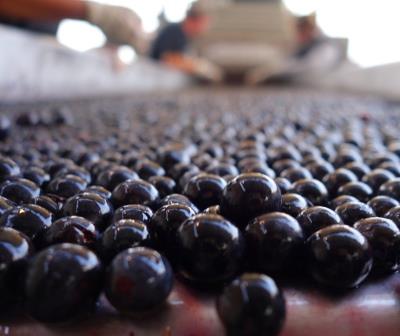
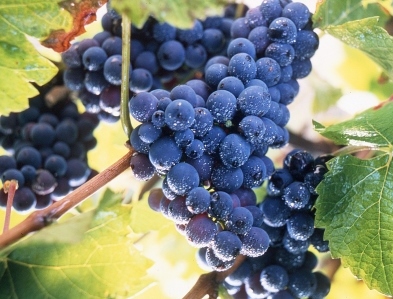
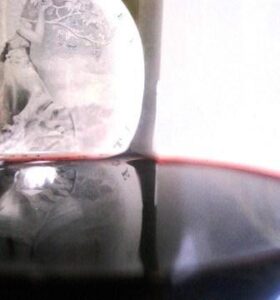

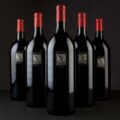
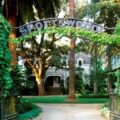

11 Comments
waiting on five to celebrate International Cabernet Sauvignon Day August 30! Open a Bottle, Celebrate
Read more at:https://t.co/Xe57IYREHC
Happy International Cabernet Sauvignon Day… https://t.co/MkMT4l78LZ
RT @JeffLeve: Everything you need to know about Cabernet to celebrate International Cabernet Day. http://t.co/TBdaa5Lh7D http://t.co/JAbkGz…
Did you celebrate International Cabernet Sauvignon Day on August 30th?! http://t.co/Jb4KYcCQYi
RT @JeffLeve: Everything you need to know about Cabernet to celebrate International Cabernet Day. http://t.co/TBdaa5Lh7D http://t.co/JAbkGz…
What wine are you opening to celebrate International Cabernet Day? http://t.co/TBdaa5Lh7D http://t.co/72qJXdWphV
Everything you need to know about Cabernet to celebrate International Cabernet Day. http://t.co/TBdaa5Lh7D http://t.co/JAbkGzc1YQ
RT @TopWineNews: #WineTalk: International Cabernet Sauvignon Day August 30! Open a Bottle, Celebrate http://t.co/iWQqWIq5wg
RT @TopWineNews: #WineTalk: International Cabernet Sauvignon Day August 30! Open a Bottle, Celebrate http://t.co/iWQqWIq5wg
RT @JeffLeve: Time to drink a bottle of Cabernet & celebrate International #CabernetDay http://t.co/TBdaa5Lh7D All things Cabernet http://t…
International Cabernet Sauvignon Day August 30! Open a Bottle, Celebrate http://t.co/s9Ck25I2lR via @JeffLeve